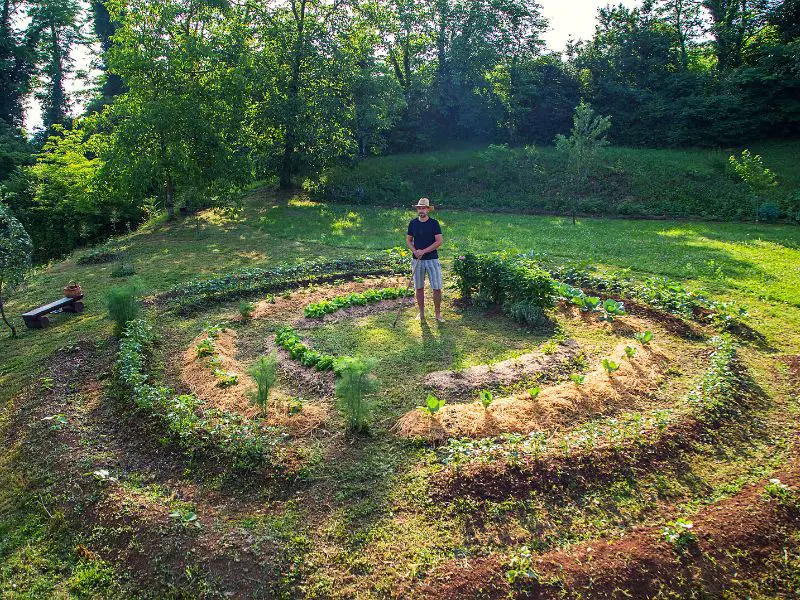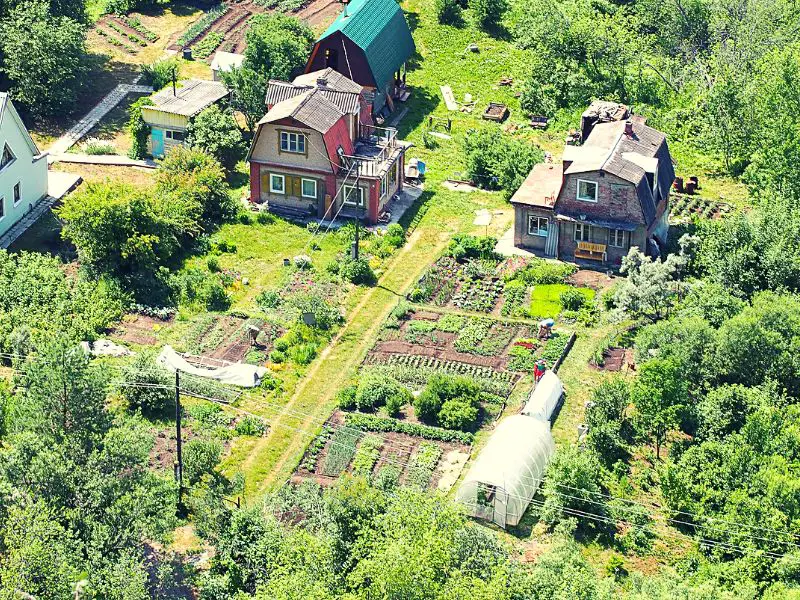The word “permaculture” is from the words “permanent” and “agriculture,” and it refers to a way of designing agricultural systems. It’s the next step in sustainable living, but how does it work? This article will tell you everything you need to know about permaculture, including its definition, ethics, and how to get started.

What is Permaculture?
The term “permaculture” is becoming more and more popular among farmers and gardeners, but what does it actually mean?
In simpler terms, permaculture, described by Bill Morrison, the co-founder and the father of the movement, as;
“Permaculture is a philosophy of working with rather than against nature; of protracted and thoughtful observation rather than protracted and thoughtless labor; and of looking at plants and animals in all their functions rather than treating any area as a single-product system.”
Another definition by student Geoff Lawton emphasizes the concept as:
“Permaculture is a design system for ecological and sustainable living, integrating plants, animals, people, buildings, and communities.”
In two terms, it is also described;
1. Permaculture is an innovative framework for the development of sustainable lifestyles.
2. Permaculture is an acute approach to designing environmentally harmonious, resource-conserving, and profit-maximizing systems applicable in any setting and by anybody.
The essence of permaculture is carefully considering how we use our resources – food, energy, housing, and other material and non-material things- so that we may get much more out of life while consuming less. We can be more useful with less effort, yielding good benefits for the environment and for ourselves to enjoy.
3 Core Ethics of Permaculture
1st Core Ethics: Earth
The first core ethic of permaculture is the Ethic of Earth. This teaches us to be aware of our connection to the planet, and its resources to interact with our environment in sustainable ways.
Humans are only as healthy as the planet. Preserving the planet’s forests, streams, and different living forms benefits us. Ask yourself. Are you acting to help the environment, hurt, or do not care for the environment? Are you acting out the best sustainable way to achieve all the goals you’ve planned today? How would nature solve any of your day-to-day problems?
2nd Core Ethics: People
The second core ethic is also about people-to-people relationships. Permaculture allows us to work together, share resources, skills, and knowledge, and even form mutually beneficial communities. It also helps us see each other’s needs how we can help others and how we can ask for help when we need it.
3rd Core Ethics: Fair Share
The third and final code of ethics is known as “Fair Share,” requiring that we equitably distribute the bounty. If we had a perfect system, the people who worked the fields would own the farms on which the crops were grown so that they would get first dibs on the harvest. And would do it to ensure those in need received their fair share of the crop.
How to Start Permaculture?
Permaculture is a design method that increases the production and efficiency of a small-scale farm or garden by emulating how the natural systems work.

However, like many other life skills, it requires practice. Or at least practice will increase your confidence!
Start by understanding what it is. Then, practice the method in your garden. Visit a local permaculture site and see how it is done there. After that, try to do your project. Collect data as much as you can, try out new things, and don’t be scared to fail.
Benefits of Permaculture Garden
1. Care For Safeguarding Natural Resources
Permaculture involves protecting natural resources and accelerating development so that every community can endure the consequences of climate change. Its principles replicate natural systems, allowing animals, fungi, and people to coexist in harmony while replenishing natural resources limitless.
2. Less Effort and Energy
The principle of a permaculture garden is to create a self-sufficient natural system that provides for anything that you might need. Because the natural flow of nature eliminates the need for intense agricultural activity, a permaculture ecosystem, once put into motion, should require less effort than conventional farming.
3. Encourages Biodiversity and Push for Wildlife Preservation
The practice of permaculture includes strategies for improving soil fertility, preserving water supplies, mitigating the effects of climate change, and creating wildlife habitats. The concept of soles is driven by maximizing biodiversity and preserving wildlife by providing additional habitat for a wider variety of animal species.
4. Provides Sustainable Organic Produce

In permaculture, perennial and annual plants are cultivated in various mixes that give mutual nutrition to one another. This improves soil health, eliminating the need for chemical pesticides, herbicides, and fertilizers. This leads to higher crop growth at the peak of sustainable farming.
5. Boost Health
Permaculture improves the three pillars of health—physical and mental.
Physical health: Permaculture gardening could be credited with improving the health of individuals through cleaner air and water. The design also enhances the taste and nutritional value of the plants grown.
Mental health: Permaculture can improve the well-being of people by improving mental health. The practice of permaculture design seems to encourage people’s mental health by promoting active learning and becoming a part of something greater.
6. Conserve Space

The principle of permaculture is to use scarce resources wisely to maintain the environment sustainably. For example, in the case of an urban setting, the principles of permaculture would encourage you to use land efficiently. It would teach you to design spaces with intensive output in a limited area.
Author’s Note
Permaculture is an agricultural or social design that attempts to emulate the relationship between nature and life. Permaculture also includes integrated organic gardening, urban planning, and energy conservation.
We hope this limited introduction to permaculture design principles has given you a better understanding of sustainable living and the benefits it can have on the environment, the people around you, and your own personal health.
Learn how to live a sustainable lifestyle with these eco-friendly guides: Effects of Carbon Footprint and How to Reduce Yours, How to Reduce Food Waste, How to Compost at Home, Everyday Habits for a More Sustainable Lifestyle


4 thoughts on “Permaculture 101: An Introduction to Sustainable Living and Its Environmental Benefits”